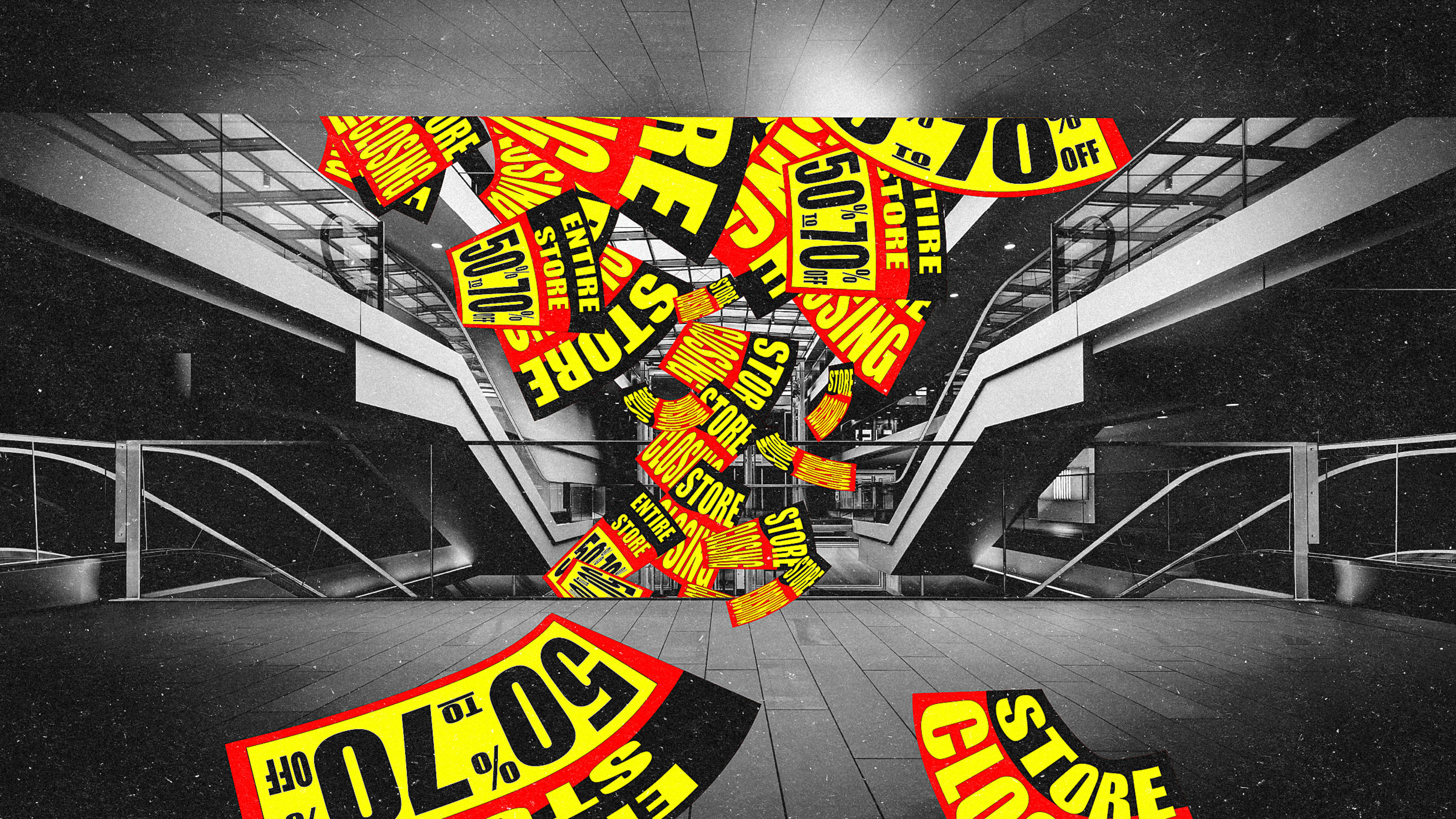Shopping malls, you may have heard, are dying. These suburban staples of retail and elderly loafing have been hit hard by the rise of e-commerce, and many around the world are struggling to remain relevant. Anchor tenants are moving out or going bankrupt, and the smaller stores left behind are flailing in the vacuum. Mall operators are scrambling to find new users—or entirely new business models—for massive complexes that seem to be shedding both shops and shoppers.
This is all troubling for shopping mall owners, for brands heavily reliant on in-store shopping, and for the remaining retailers trying to make their mall storefronts pencil out. One overlooked group deeply affected by the decline of the shopping mall is perhaps its most quintessential user: the suburban teenager.

In suburban Boston, a group of these prototypical customers is trying to help the shopping mall industry solve its existential crisis. The entrepreneurship club at the New England Innovation Academy (NEIA) in Marlborough has made a school project out of a local mall’s uncertain future. At the invitation of the Solomon Pond Mall’s management team, teenagers at the school have become informal advisers offering ideas for helping plot out how the mall could adapt and evolve.
“A lot of times we are looking at this as seasoned professionals,” says Liz Kelley, the mall’s general manager. “Sometimes it’s good to get a fresh perspective.”
The students from NEIA aren’t just spouting out teenage opinions. NEIA is a private middle and high school with a focus on innovation, design, and entrepreneurship, and is now in its second year of operation. One of the pillars of NEIA’s curriculum is the concept of human-centered design, a design and problem-solving process based on understanding the needs and desires of stakeholders before proposing any kind of solution. The school’s entrepreneurship club is looking at the mall through this lens.
Earlier in the schoolyear, the entrepreneurship club took a field trip to the mall to meet with its marketing director and learn more about the mall’s operations, business model, and issues with vacant storefronts. Following the school’s human-centered design ethos, the students began identifying stakeholders in the mall, from shop owners to customers to the property managers. Through interviews, they developed a sense for what the mall needs to thrive while also seeing ways to improve the dwell time of shoppers.
Back at school, the club members processed all this information and began to ideate, like a room of design thinking consultants. They noticed that there were few places where people could sit and take a break during a trip to the mall, and saw the potential for adding more benches. They heard from stakeholders that some parts of the mall were not well lit, so lighting improvements were added to their list. They even created a plan for adding more plants to bring extra life into the mall’s corridors.
“We had sort of down-to-earth, nitty-gritty details for fixing the mall, and keeping the mall idea,” says Hans-Peter Hansen, an 11th grader in the club.
The club met with Kelley to present suggestions. Speaking diplomatically, Hansen says the presentation did not go over well. “We had some miscommunication with the mall,” he says. “We got some feedback from our client, and she wanted big, more open ideas.”
Essentially, the mall was not impressed with the students’ focus on small details. “The kids were crushed,” says Lily Fu, NEIA’s head of collaboration. “But that’s the real world.”
Aaron Zhang, another 11th grader in the club, says the feedback was very demotivating. “We actually lost a lot of members post-failure,” he says. “That’s what we call it.”
The nine-member club dropped down to just four members. But failure didn’t kill the project. The remaining members recalibrated their human-centered design process around ideas that were less constrained by budgets and practicalities. “It was a major turning point for the project,” Zhang says. “I think it’s important that we learn from our failures.”
Victor Lim joined the club post-failure. The 11th grader says the second round of ideation was much more freewheeling, but also more attuned to the factors that are causing such upheaval in the mall industry. “It’s not that malls are dying necessarily. It’s that the average local small mall is dying,” Lim says. “But the good, impressive malls are still around. It’s up to the smaller local malls; they have to adapt and adjust.”
Zhang points out, “Our assignment isn’t really about malls. [The mall’s management] knows everything that there is to know about malls because they’ve been working on them for so long. We’re coming to this project essentially with a blank slate and putting what teenagers like us would want.
“We quite literally are the consumers of the Solomon Pond Mall,” he adds.
The students devised a plan with more radical ideas for adapting the mall, focusing on features that they as teenagers would want to use. Looking to successful malls in the region that have an emphasis on activities like bowling and go-karts, the students proposed using vacant stores in the Solomon Pond Mall for experiential offerings, like virtual reality rooms and an immersive themed spa. Their second presentation to the mall, in late February, was received more warmly. “Victory tastes sweeter after the heartache,” Zhang said afterward.
Kelley says she was impressed by the students’ presentation and professionalism. That doesn’t mean she’s adding an immersive themed spa to the mall anytime soon, though. “There are certain feasibility issues with some of the ideas,” she says. “Not everything can be accomplished. But they had some very creative ideas.” Kelley says she is open to working with the students again as the mall considers changes in the future.
“We have a blank slate here, really,” Zhang says. “We have an opportunity to innovate something brand-new for the malls in this area.”
Recognize your brand’s excellence by applying to this year’s Brands That Matter Awards before the early-rate deadline, May 3.
